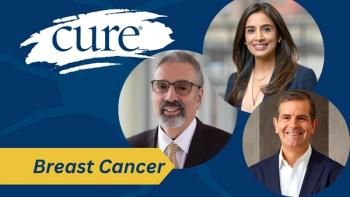
A Decade of Cancer Survivorship: What Helped Me Through It
CURE magazine and other resources helped one survivor navigate diagnosis and beyond.
I remember seeing copies of CURE in my oncologist’s reception area; I took the
I’m going into 10 years of survival from highly aggressive triple-negative breast cancer; now it’s my turn to write about my experiences based on the stories in this issue. My younger sister-in-law and I were diagnosed with breast cancer a few months apart, but for some reason, family members wanted to keep it secret from both of us. Neither one of us started treatment when first was diagnosed as we were waiting for different things to fall in place. NOTHING was the same after we were diagnosed. She had double mastectomy and I had two surgeries at once: lumpectomy with sentinel lymph node biopsy.
I sent my sister the article, “
In addition to CURE, other resources helped me along the way, too.
My second opinion oncologist became my new doctor as he was listening to all my chemo complaints. The phrase “patient, heal thyself” was definitely true! He slowed down all chemo treatments with lower does, longer time, changed meds, and did all lab work the day before chemo treatment at the local hospital. Being newly diagnosed with celiac disease six months before the cancer showed up, I had all kinds of stuff go wrong with chemo. It was deemed safer to keep me at the hospital for chemo rather than the doctor’s outpatient facility. This was a team decision as I felt safe there, couldn’t handle any more medical changes, and cried constantly!
I got the chemo video from the American Cancer Society sent to my email address along with any other educational material I needed to increase my coping skills and understand how treatments work. I’m sure my hysterical calls were a challenge, but their voices and questions calmed me down so that they could understand why I was calling.
My favorite article in CURE, “





